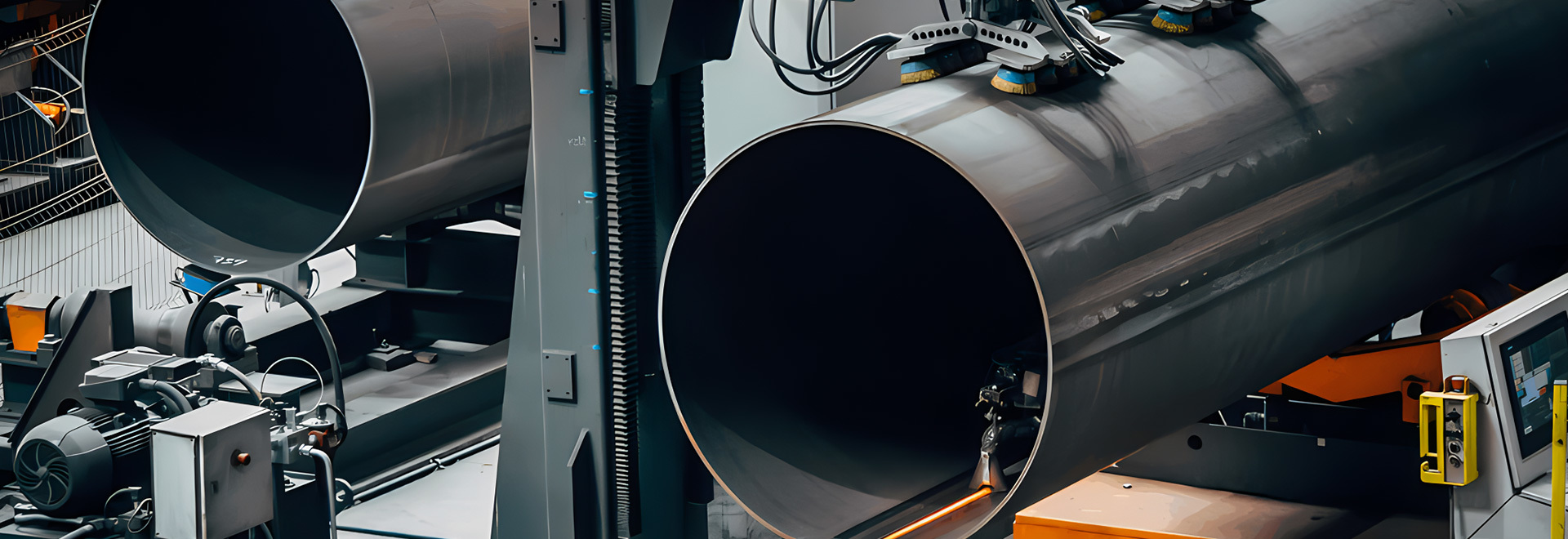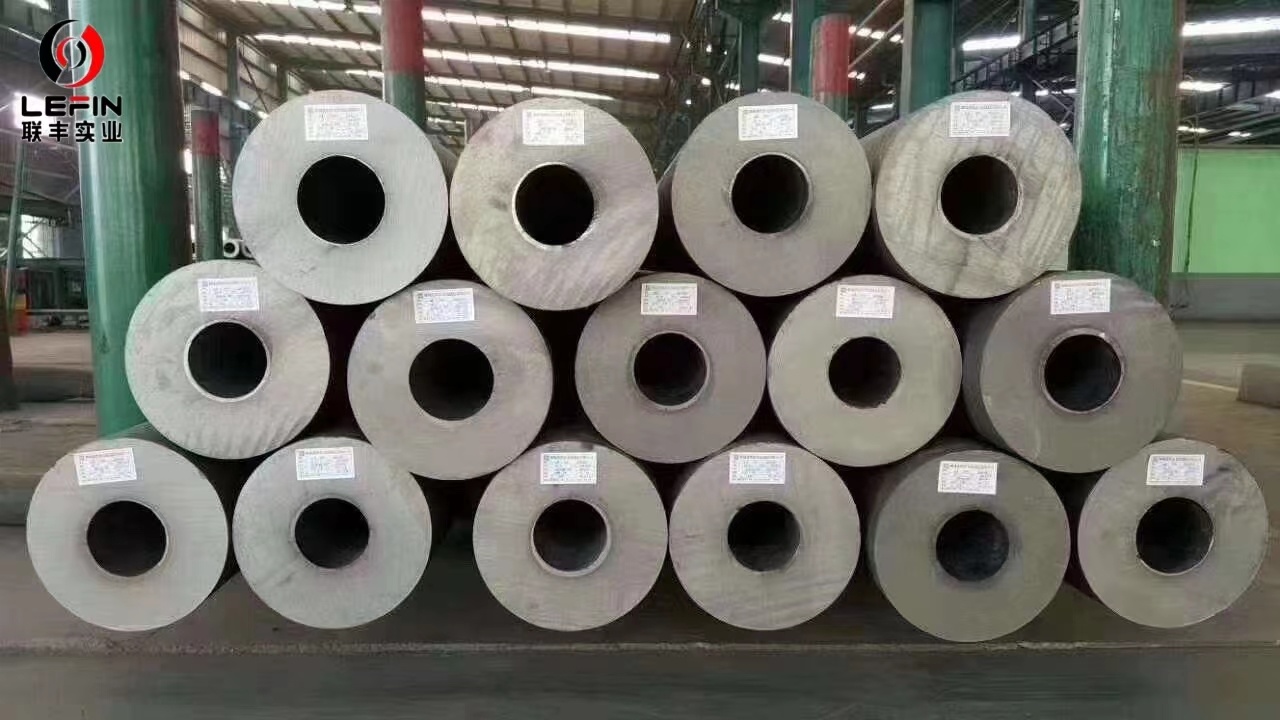ERW or HFW PIPE
What are the differences between API5L PSL1 and PSL2 steel pipe
Release time:
2024-09-03
API 5L is the standard specification for line pipe used for the transportation of oil, natural gas and other fluids. It includes two product specification levels: PSL1 and PSL2. There are differences between API 5L PSL1 and API5L PSL2. Generally speaking, PSL2 has more stringent requirements than PSL1. LEFIN STEEL can produces both API5L PSL1 and API5L PSL2 steel pipe.
What are the differences between API5L PSL1 and PSL2 steel pipe
API 5L is the standard specification for line pipe used for the transportation of oil, natural gas and other fluids. It includes two product specification levels: PSL1 and PSL2. There are differences between API 5L PSL1 and API5L PSL2. Generally speaking, PSL2 has more stringent requirements than PSL1. LEFIN STEEL can produces both API5L PSL1 and API5L PSL2 steel pipe.
Contact: Nina Wang
Whatsapp: 008618892236531(whatsapp)
Email: nina@lefinsteel.com
| Differences | Details |
|---|---|
| Quantity | PSL1: Quality and application PSL1 is the most commonly used standard and is the standard quality level for line pipe. It is not as strict as PSL2 in terms of quality and mechanical properties. PSL2: PSL2 has a higher quality level and stricter requirements. It is used in more demanding applications that require higher performance. Ensure better mechanical properties and more stringent testing. |
| Chemical composition | PSL1: PSL1 has a broader chemical composition. PSL2: There are strict chemical composition requirements. Limit carbon content and strictly control the addition of other elements. Includes maximum limits on phosphorus and sulfur content to improve weldability and reduce the risk of sulfide stress corrosion cracking. |
| Testing Requirements | PSL1: Basic testing requirements, includes standard tensile tests and hydrostatic tests. PSL2: 1. Charpy V-notch impact test, |
| Traceability and Certification | PSL1: Basic traceability requirements. Certification may be less detailed. PSL2: Enhanced traceability from raw materials to finished products. More detailed certification requirements, including heat treatment records and testing results |
Advantages:
Advantages for PSL1
PSL1 pipes have fewer testing and quality requirements and are generally less expensive.
PSL1 pipeline is very suitable for uncomplex environment applications.
For many standard applications, such as water transportation or basic oil and gas transportation, PSL1 pipes provide adequate performance.
The manufacturing process of PSL1 pipes is less complex and time-consuming.
PSL1 pipes have fewer mandatory tests, such as toughness testing, non-destructive testing and chemical composition analysis, reducing overall production and quality control costs.
Advantages For PSL2
PSL2 pipelines undergo more stringent testing and quality inspections
PSL2 pipes generally have higher tensile strength and yield strength.
PSL2 pipes need to pass more stringent toughness tests to make them suitable for harsher environments.
PSL2 pipes need to pass more stringent toughness tests to make them suitable for harsher environments.
PSL2 pipes have tighter dimensional tolerances, ensuring better fit and performance.
PSL2 includes additional testing for sour environments, making it more resistant to corrosive environments.
Application:
Application For PSL1
PSL1 pipeline is suitable for the transportation of oil, gas and water in environments with low requirements.
PSL1 pipelines are often used in onshore pipeline systems with mild environmental conditions and low performance requirements.
PSL1 pipes are used in water distribution systems where pressure and quality requirements meet standards.
PSL1 pipe is ideal for applications that do not involve high pressure, high temperature or corrosive environments.
PSL1 pipe is sometimes used in structural applications where pipe strength and toughness are less important.
Application For PSL2
PSL2 pipelines are used in critical, high-pressure oil and gas transportation systems.
PSL2 pipelines are crucial to offshore pipeline systems, and pipelines must withstand harsh marine environments.
PSL2 pipelines are used to transport acid gas or crude oil containing hydrogen sulfide (H2S) and require high corrosion resistance.
PSL2 pipes are used in high-pressure and high-temperature systems that require enhanced mechanical properties.
PSL2 pipes are suitable for environments with severe weather conditions, high salinity or other corrosive elements.
PSL2 pipelines are used for processes where high reliability and performance are critical.
PSL2 pipelines are used in natural gas pipelines that require strict safety and performance standards.
PSL2 pipes are preferred for use in environments where hydrogen sulfide is present due to their better toughness and chemical resistance.
| How to choose | PSL1 | PSL2 |
|---|---|---|
| Assess the Application Requirements | Basic application(PSL1): If the application involves standard oil, gas or water transportation and the environmental and operating conditions are not extreme. For example: onshore pipelines, water distribution systems and other non-critical infrastructure. | Key applications(PSL2): If the application requiring higher performance due to harsher environmental conditions, higher pressures or stricter safety standards. For example: offshore pipelines, high pressure systems, sour environments and critical infrastructure projects. |
| Assess environmental conditions | Moderate conditions(PSL1): Suitable for areas with stable climate conditions, non-extreme weather conditions and low corrosion risk. For example: areas with mild climate, non-corrosive environment and stable temperature. | Hard conditions(PSL2): Required for areas with harsh climate conditions, high salinity or other corrosive elements. For example: offshore installations, arctic regions, high altitude areas and chemically aggressive environments. |
| Consider Pressure and Temperature | Standard Pressure And Temperature(PSL1): Adequate For Applications Involving Standard Operating Pressures And Temperatures. For example: General water and gas pipelines, non-pressurized systems. | High Pressure And Temperature(PSL2): Required for high-pressure and high-temperature systems to ensure reliability and safety. For example: High-pressure oil and gas transmission, refinery processes, and industrial pipelines. |
| Analyze Chemical And Mechanical Requirements | Standard Requirements(PSL1): Offers a broader range of chemical compositions and mechanical properties, providing flexibility for non-critical applications. | Stringent Requirements(PSL2): Provides tighter control on chemical composition and mechanical properties, ensuring higher performance and durability. |
| Determine Budget and Timeline | Budget Constraints(Psl1): Generally less expensive due to fewer testing and quality control requirements. | High-Performance Requirements(PSL2): Higher cost due to rigorous testing, but essential for applications requiring high reliability and safety. |
In conclusion, API 5L PSL2 steel pipe has higher quality and performance compared to PSL1. PSL2 piping is used for more demanding and critical applications, and PSL1 piping is suitable for standard service conditions and less demanding applications. You can choose the products you need based on the project's usage environment, delivery time, chemical properties and physical properties.
Tags:
Relevant Project

Address: Hengtai Road,Daqiuzhuang Town,Jinghai County,Tianjin,China
Mob: +8615122229899(whatspp)
Phone: +86 22 58171905
Fax: +86 22 58171902
E-mail:info@lefinsteel.com
Get company updates

Tianjin Lefin Industrial Co.,Ltd. All rights reserved City sub-station SEO www.300.cn





